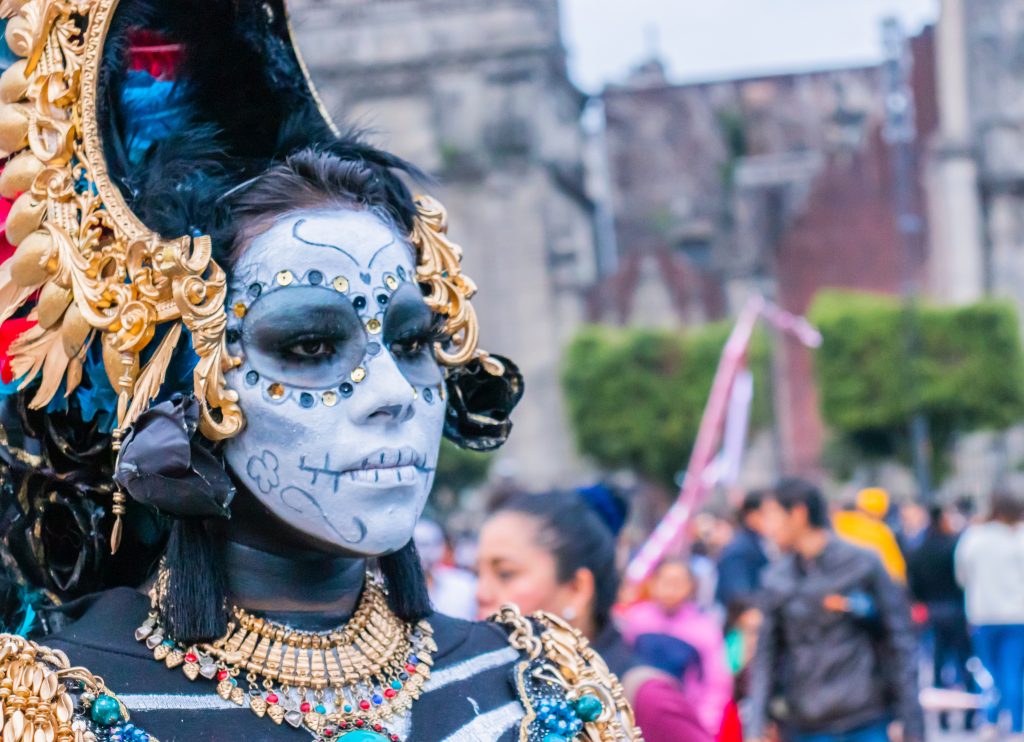
Photo by Filiberto Santillán @filisantillan
The sheer size of Mexico guarantees a surplus of festivals nearly every day of the year, but there are some that stand out for their unique features. One of the most colorful feasts of the year is November’s Día de los Muertos (Day of the Dead). This far from somber occasion is a mixture of pre-Hispanic traditions and Catholic faith, of rituals and toys, of sweet candy skulls and milk chocolate crossbones. It’s a time when families gather graveside not to lament, but to share with the deceased a favorite meal, a glass of tequila, and a good round of mariachi music. Though outsiders collectively know the holiday as the (one) Day of the Dead, it’s actually a two-day holiday that pays tribute to the dearly departed. November 1st honors children and infants; deceased adults are honored on November 2nd.
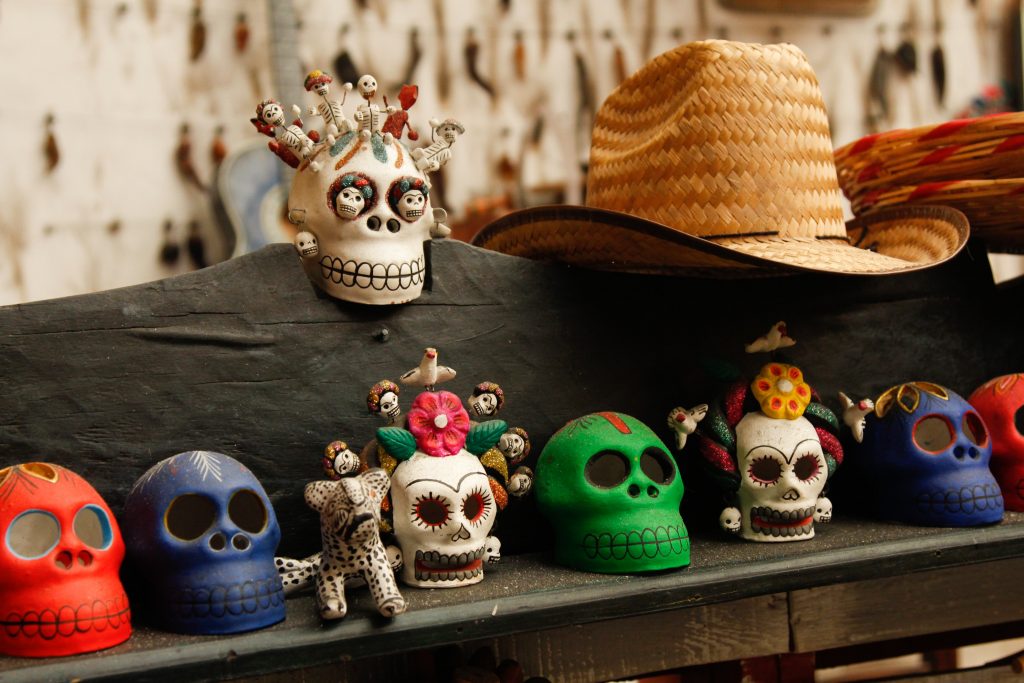
Photo by Semma Miah @seemamiah
Besides the sugar skulls, or calaveras, one of the iconic characters that has come to represent the Day of the Dead is La Catrina, originally the creation of famous artist José Guadalupe Posada, who created it over 100 years ago to poke fun at those who aspired to be something they weren’t in order to rise in society. Today, these elegant figurines with their wide-brimmed hats, elaborate dresses and haughty stances—together with their masculine counterparts, the catrones—are part and parcel of Mexico’s artistic landscape and a staple of the Day of the Dead decorations everywhere.
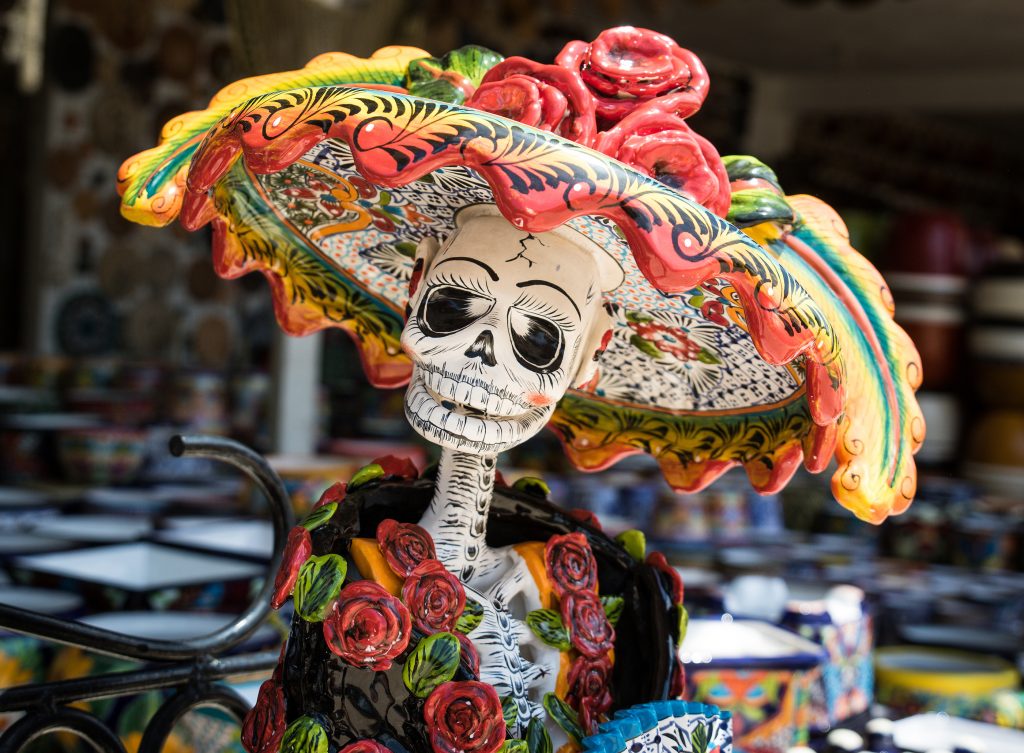
Though celebrated throughout the nation, the colonial town of Pátzcuaro in the state of Michoacán one of the most renowned for its Día de los Muertos festivities. From mid-October through the first days of November, the citizens festoon their homes and businesses with bright tissue paper cutouts, candied skulls, bones and coffins, fresh flowers and scented candles. The graveyards are decorated with garlands of yellow xempazuchitl flowers (yellow marigolds, a symbol of death), and families join together with their dearly departed for a delicious meal, prayer and song.
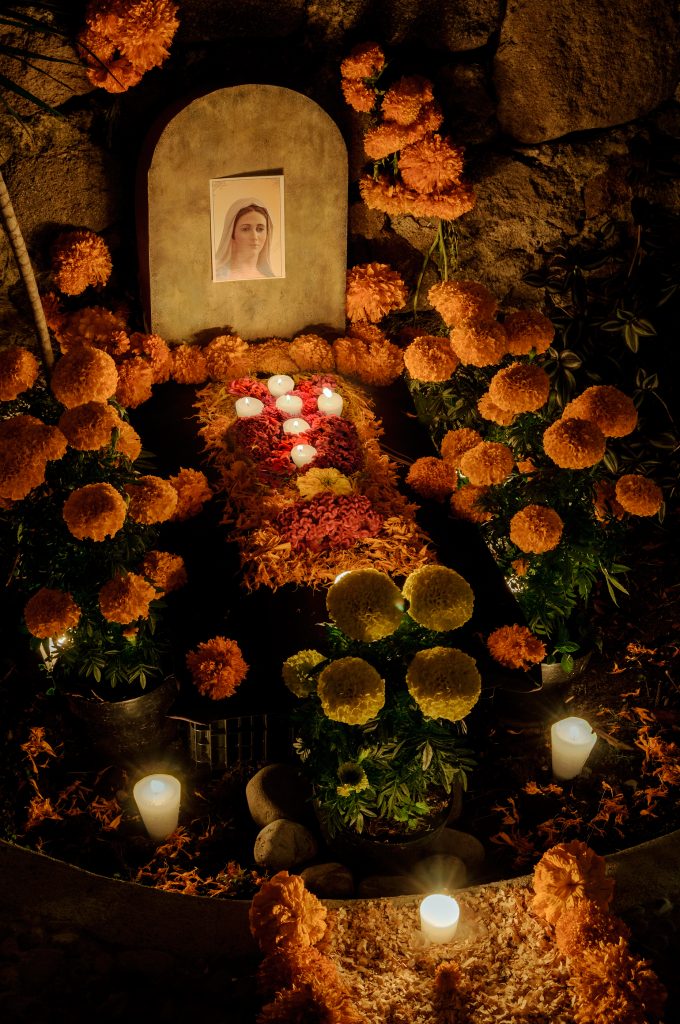
There are numerous tour operators who take groups into Mexico to experience this exceptional festival. Tia Stephanie Tours offers several cultural immersion tours, including some where you’ll join local families in remote villages in visiting gravesites and altars that have been decorated to commemorate the return of deceased family members and loved ones.
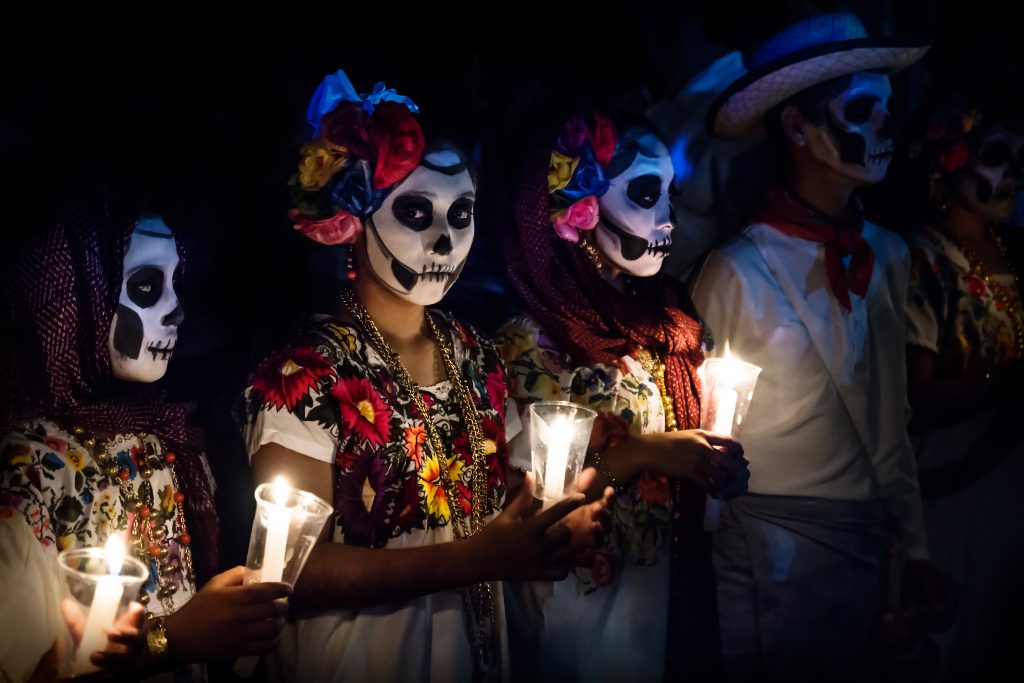
The state and city of Oaxaca is also famous throughout Mexico for its celebration of El Día de los Muertos. The festivities begin a week before with the commencement of the Plaza de los Muertos. The markets are busy with housewives searching for ingredients to make traditional dishes such as mole negro (a spicy sauce that can have up to 100 ingredients), pan de yema and Oaxacan chocolate. The elaborate altars are created a couple of days before, on October 30th and 31st, and traditionally include an arch of sugarcane above a table with a white tablecloth filled with offerings: the dearly departed’s favorite food and drink, flowers, pan de muerto (literally, “bread of the dead,” it’s soft, sweet and perfect with hot chocolate and coffee), a cornucopia of sweet fruits, flowers, sugar Calaveras (skulls), framed photographs and more.
For visitors, the artistry, the pageantry and the food are well worth the visit. Outfitters like Traditions Mexico Cultural Journeys and MOC Adventures can take you to this beautiful state and its exquisite capital, renowned as one of the culinary and cultural hotspots of the Republic of Mexico.
Intrigued yet? We’re sure you’ll be delighted: it’s miles away from the carved pumpkins, witches and ghouls that take over our shopping centers and suburbs on Halloween, but it will surely steal a bit of your heart and leave an imprint on your soul.
Plan on celebrating the Day of the Dead in Mexico next year, and don’t forget to take along your SkyMed TAKES YOU HOME membership: we’ve got you covered!
Safe travels!







